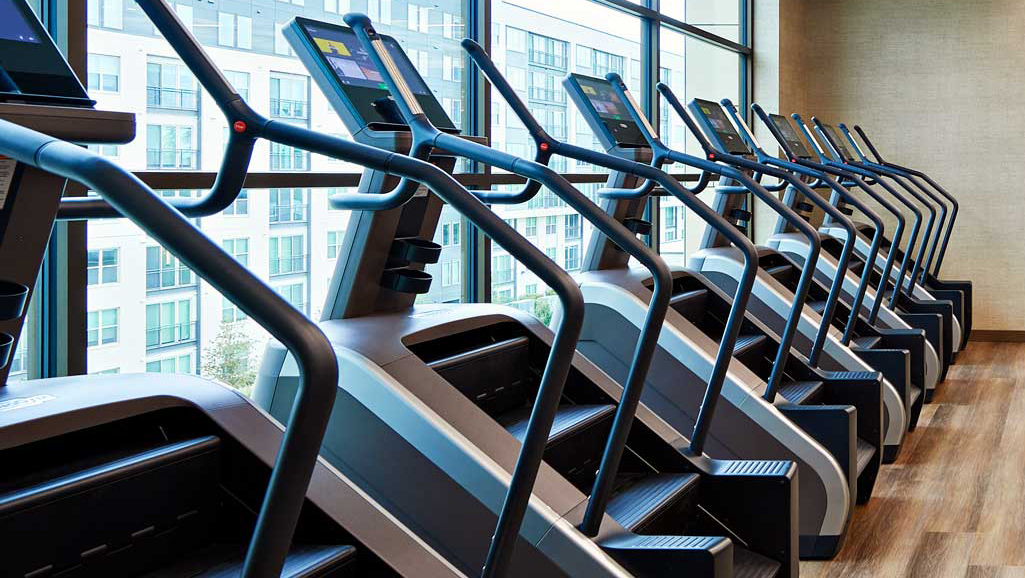Indoor rowers — also known as ergometers, or “ergs” — are widely considered one of the best tools for a well-rounded cardio session. They offer a low-impact but highly effective workout that’s ideal for exercisers and competitive racers alike.
The motion isn’t entirely foolproof, though. While it’s easy to step on a treadmill and just walk, the erg requires an understanding of form, sequencing, and cadence.
Many assume that rowing is all in the arms, but it’s actually initiated by pressing through the feet: Power and intensity are derived from the legs and hips. Gripping the handles too tightly, scrunching up the shoulders, and hunching over can result in joint pain in the hands, wrists, and elbows, as well as lower-back discomfort.
Boost your performance and comfort by maintaining an upright posture and a proper pull: Begin with the leg drive and finish by drawing the handles close to your body. Reverse in the opposite order, extending your arms before sliding forward on the seat.
1) Start seated in the rower with hands grasping the handles, hips and knees bent, arms straight, head neutral, back straight, and shoulders level.
2) Initiate the drive with your feet. As your legs straighten, lean back slightly and pull the handle toward your body. Finish the pull with legs straight and the handle at or just below your ribs.
3) Return to the starting position by first extending your arms until they are straight, then leaning forward at the hips.
4) Once your hands have cleared your knees, allow your knees to bend and gradually slide your seat forward. Repeat.
To get a feel for the sequencing, try this exercise:
- Seated on the rower, grasp the handles with straight arms.
- Without bending or pulling with your arms, press through your feet to fully extend your legs and lean back slightly. Note the power generated by your legs.
- Gently return to the starting position. Repeat 10 times using just your legs.
- Then add the arms into the equation, pulling with your hands only when your legs have extended and the handle has passed your knees.
- Repeat 10 times using your legs and arms, focusing on coordinating the pulling sequence.
How to Use the Damper Level on an Indoor Rower
Indoor rowers come with a lever on the side of the fan cage, with settings that are numbered 1 through 10. While these numbers are commonly mistaken for resistance or intensity levels, they denote no such thing. Rather, this lever is a damper that controls how much air is drawn into the cage on each stroke.
- Higher damper settings allow more air into the fan cage. In general, a higher setting is best for a strength workout.
- Lower damper settings allow less air into the fan cage. In general, a lower setting is best for aerobic workouts.
Regardless of the damper setting, increased effort — in other words, the harder you use your legs, back, and arms — will result in increased intensity.
Experts recommend starting with a damper level of 3 to 5, and adjusting to your comfort level and goals while keeping pristine form and sequencing the priority.
Rowing for Strength and Power
Two creative rowing workouts to help you get strong and powerful
Indoor rowing machines are commonly considered low-impact tools designed to improve endurance and cardio fitness. While they certainly can help achieve those goals, they can also do much more.
With different speeds, intervals, and damper levels, the erg can help boost strength, power, and fat-burning potential. Here are two workouts to try:
Rowing for Strength
This moderate-tempo workout will keep your heart rate up, with rest intervals that won’t allow for full recovery.
Warm-up: Row 500 meters at a slow, relaxed pace.
Work sets: Perform 10 rounds.
- Complete 40 seconds of steady, powerful pulls.
- Step out of the rower and perform 10 pushups.
- Complete 90 seconds of easy pulls.
Cool-down: Row 500 meters at a slow, relaxed pace.
Rowing for Power
This sprint workout calls for a combination of hard, speedy, explosive bouts and relaxed rest periods.
Warm-up: Row 500 meters at a slow, relaxed pace.
Work sets: Perform 15 rounds.
- Complete 20 seconds of hard pulls.
- Complete 100 seconds of easy pulls.
Cool-down: Row 500 meters at a slow, relaxed pace.
For more cardio workouts to build strength and power, visit “The Workout: Old Twists on New Faves.”





This Post Has 0 Comments